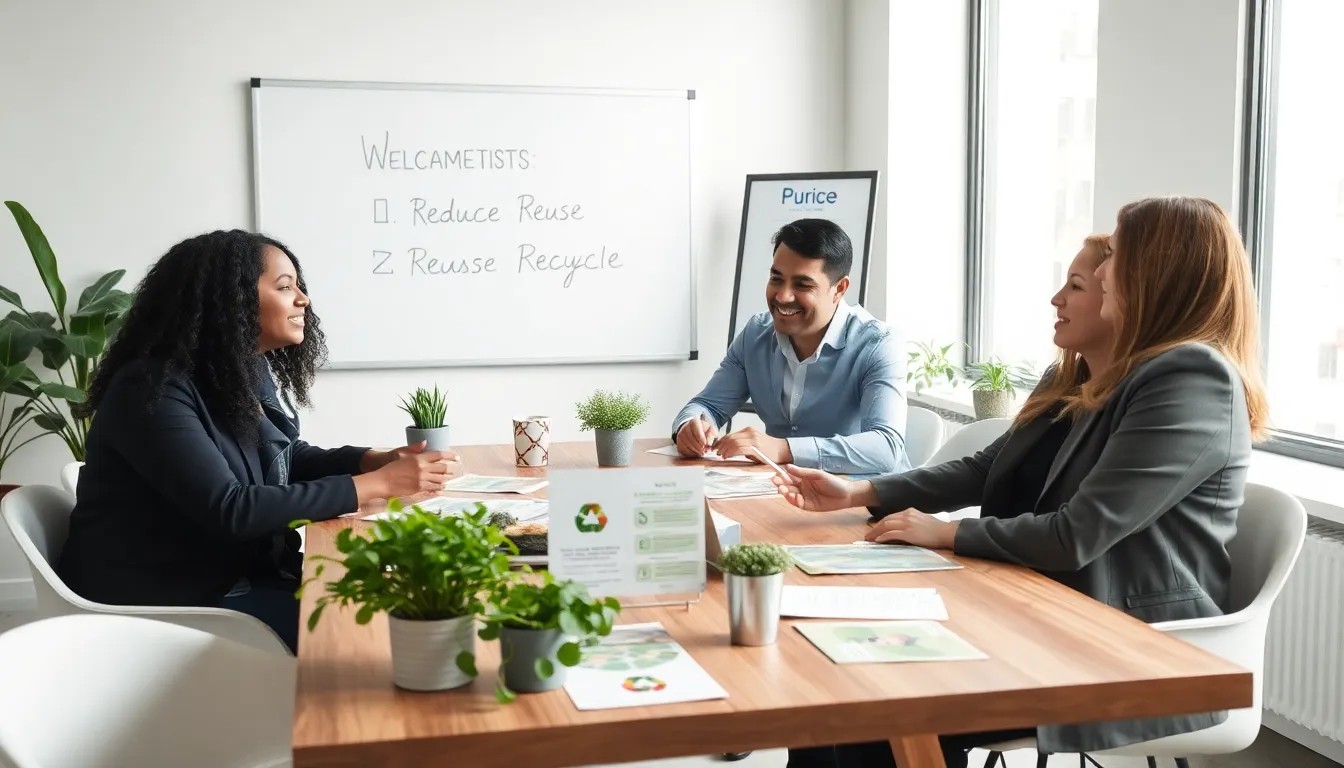Table of Contents
ToggleImagine waking up every day knowing that your choices contribute positively to the planet. Sustainable living isn’t just a buzzword: it’s a way of life that is becoming increasingly essential. When you think about it, who hasn’t accidentally left the lights on, or reached for plastic instead of reusables? Don’t worry: we’ve all been there. The journey toward a sustainable lifestyle might seem daunting, but with the right guidance, it’s not only achievable but also enjoyable. This guide is here to walk you through the principles of sustainability, practical steps for implementation, and how you can make a real difference.
Understanding Sustainable Living

The Importance of Sustainability
Sustainability isn’t just a trend but a necessity for future generations. As environmental issues like climate change and resource depletion become more pressing, the call for sustainable living resonates louder than ever. The choices made today directly affect tomorrow, and embracing sustainability signifies a commitment to a healthier planet.
Core Principles of Sustainable Living
At its heart, sustainable living revolves around three core principles: reducing consumption, reusing materials, and recycling whenever possible. By adopting these principles, individuals can minimize their ecological footprint while promoting environmental health. It’s not about sacrificing comfort or convenience: it’s about shifting mindsets to prioritize long-term benefits over short-term conveniences.
Practical Steps to Get Started
Creating a Sustainable Home
Transforming a typical household into a sustainable haven doesn’t require radical changes. Start by incorporating eco-friendly materials in home renovations, like bamboo floors or low-VOC paints. Adding energy-efficient appliances can significantly reduce electricity usage. Simple habits like switching off lights when leaving a room can also lead to savings on utility bills.
Energy Efficiency and Conservation
One of the most effective ways to promote sustainability is by improving energy efficiency. Use natural light whenever possible and consider installing energy-efficient windows. Even simple actions, like unplugging devices when not in use, can contribute to better energy conservation. The goal isn’t to live in darkness: it’s about being more conscious of how energy is consumed.
Water Conservation Techniques
Water is a precious resource, and conserving it can be easy with a few focused efforts. Fixing leaks promptly, installing low-flow fixtures, and using rain barrels can significantly reduce water wastage. Individuals can create a habit of shortening showers or turning off the tap while brushing their teeth. Making these small changes compounds to profound impacts on water conservation.
Choosing Sustainable Products
Local and Organic Food Choices
Making conscious food choices is pivotal in sustainable living. Supporting local farmers not only reduces carbon footprints associated with transportation but also bolsters local economies. Organic produce, although sometimes pricier, typically involves fewer pesticides and better farming practices. Shopping at farmers’ markets can be an enjoyable way to engage with the community while opting for health-conscious food.
Eco-Friendly Alternatives for Everyday Items
Transitioning to sustainable products doesn’t have to expensive. Many eco-friendly alternatives exist for everyday items, like beeswax wraps instead of plastic cling film and stainless steel straws over single-use plastic ones. Many brands are now offering biodegradable or reusable options for household products, making sustainable choices more accessible than ever.
Reducing Waste and Recycling Effectively
Minimizing Single-Use Plastics
One of the biggest culprits in environmental degradation is single-use plastics. Utilizing reusable bags, containers, and utensils can dramatically decrease plastic waste. Some people may find it challenging to remember to bring their reusable items, but establishing a routine can make this habit stick.
Composting Basics and Benefits
Composting is a wonderful way to reduce waste while creating nutrient-rich soil for gardens. It’s simpler than people think: just start by setting aside kitchen scraps and yard waste. With a little time, anyone can contribute to reducing landfill contributions while nourishing their gardens.
Engaging with the Community
Supporting Local Businesses and Farmers
One of the most effective ways to promote sustainability is by supporting local businesses. When individuals spend money locally, they contribute to their community’s economy and reduce transportation emissions. Adding local goods to one’s shopping list encourages others to adopt sustainable practices.
Community Initiatives for Sustainability
Joining community initiatives can further amplify sustainability efforts. Many towns feature community gardens, clean-up events, or sustainability workshops. Engaging with others not only increases knowledge but fosters a sense of unity in pursuing eco-friendly practices.




